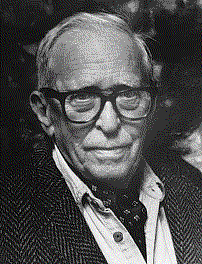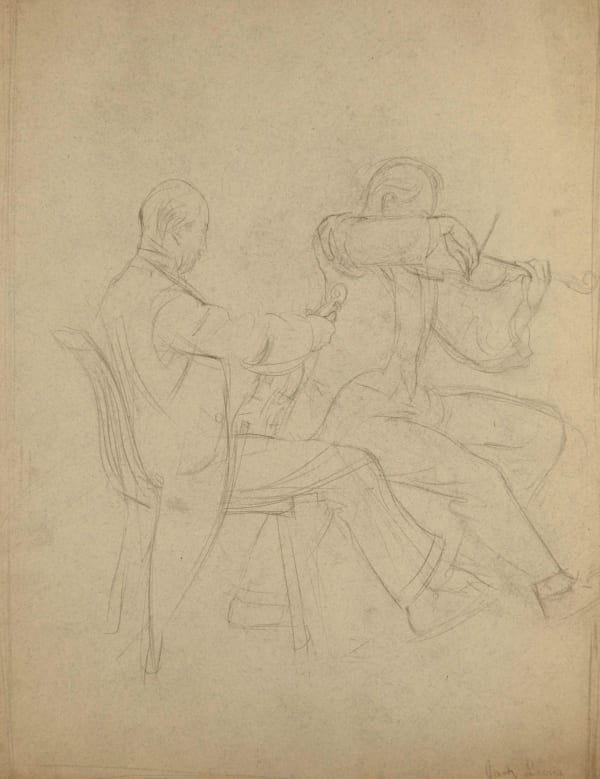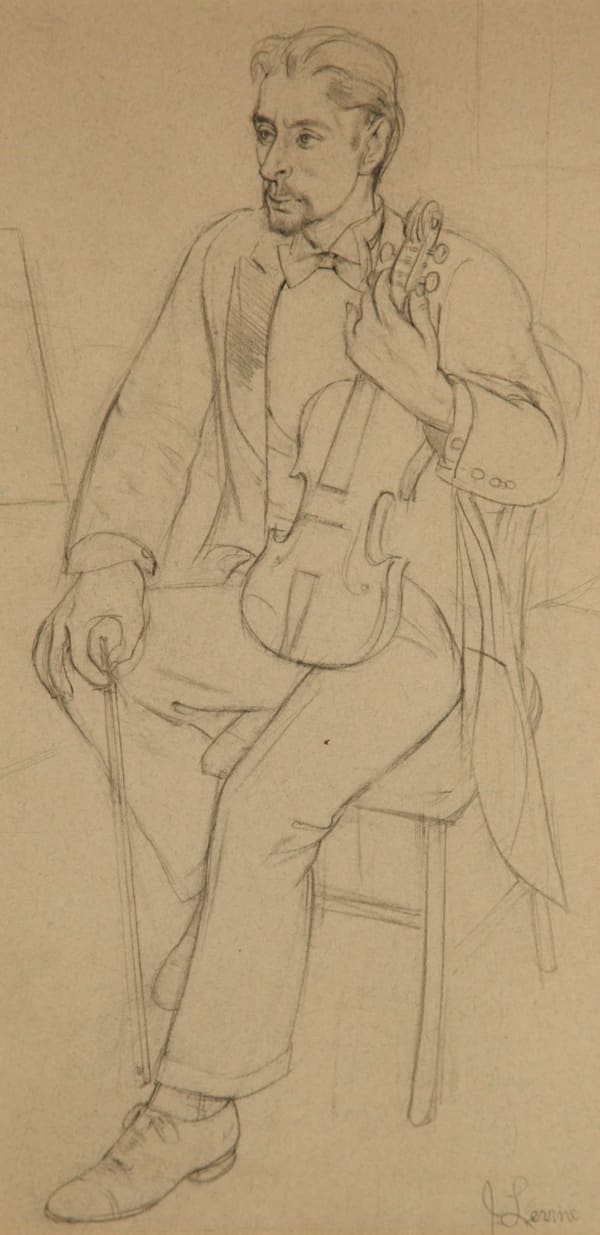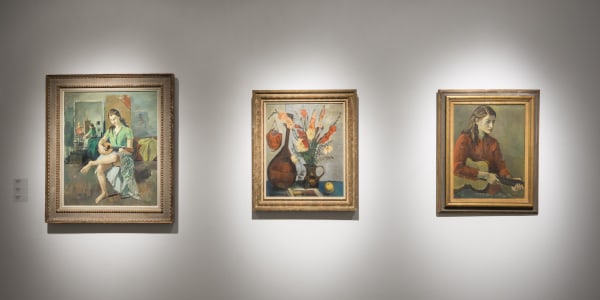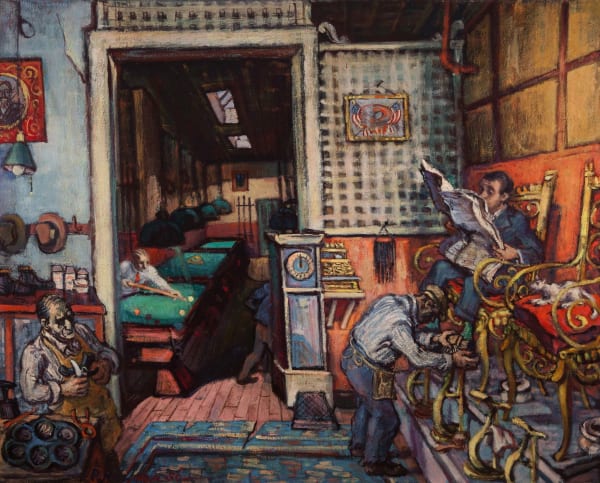Jack Levine
Levine grew up in Boston’s South End, the youngest of eight children born to Lithuanian immigrant parents. In 1930, at the age of fourteen, he was accepted into a painting program at Harvard University taught by Professor Denman Ross. By the age of twenty-one, he was employed in the newly formed Works Progress Administration. His WPA paintings, Card Game (1933) and Brain Trust (1935), were exhibited at the Museum of Modern Art in 1936. The following year, he achieved national recognition with The Feast of Pure Reason (1937), which entered the collection of the Museum of Modern Art. Considered one of Levine’s seminal works, it is a bitter commentary on what the young artist perceived to be an unholy alliance between cops, politicians, and criminals.
Levine’s first one-man show was held at New York’s prestigious Downtown Gallery in 1939. His devout father died that same year, inspiring a decidedly non-devout son to start a series of small paintings on Jewish themes. He returned periodically to these subjects for the next forty years.Levine’s meteoric rise was interrupted by a three and a half year stint in the Army during World War II. After the war, he married artist Ruth Gikow and moved to New York City. In 1952, Boston’s Institute of Contemporary Art organized a major retrospective of his work that traveled widely for three years, closing at the Whitney Museum of American Art. During the 1950s and 1960s, Levine continued to create some of his finest works, including what is often regarded as his magnum opus, Gangster Funeral (1952-53), which is in the collection of the Whitney Museum of American Art.
In the 1960s, Levine turned increasingly to printmaking, continuing his stated purpose of producing human interest subjects in ways that evoked the great masters. Between 1960 and 1975, Levine embraced topics ranging from the American Civil Rights movement and prison conditions in Spain under Francisco Franco to a series on the theme of the Judgment of Paris. In 1978, a comprehensive retrospective of his work, organized by the Jewish Museum, traveled throughout the country, and in 1999, the Brooklyn Museum presented an exhibition of his etchings and lithographs. An award-winning documentary film titled Jack Levine: A Feast of Pure Reason was produced and directed by David Sutherland in 1985, while filmmaker William Powers released Jack Levine: An Autobiography on Film in 2005.
Writer Avis Berman has observed, “For more than sixty years, Jack Levine has combined a sense of political and social outrage with a love for the tradition and craft of Western painting. His best-known canvases are dramatic multi-figural compositions that flay the institutions of law, business, politics, and the art world, but in his portraits and nudes Levine also has his tender moments.” In the words of art historian Milton Brown, “he is a history painter for our peculiar times, ultimately concerned with the incongruous relationships, ludicrous events, and ironies of existence that somehow define our political, social, and cultural character.”
